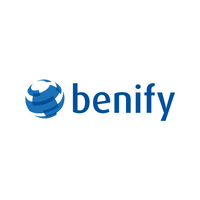How to deal with a declining workforce and the arrival of Generation Z

The ageing of older generations we are now witnessing is likely to cause challenges for organisations as they try to retain employee skills and knowledge.
The number of employees older than 55 years old is increasing rapidly, while the number of new-borns is decreasing. Academy to Innovate HR (AIHR) shares that in the US alone, 10,000 baby boomers turn 65 every day and this will continue until 2030.
Data from the European Labour Force Survey shows that 16% of the total workforce in the European Union are aged over 55. In Germany, Finland, and Sweden, the number of mature workers is close to one in five.
The industries most affected
Although the issue of an ageing workforce applies to every industry, some industries are more vulnerable than others. The financial sector, for example, is currently dealing with significant pension pay-outs.
Recruiting doctors in rural areas is another challenge, with many doctors approaching retirement age being enticed to stay on in their positions since they offer knowledge and security. But how else can companies retain knowledge?
Our advice? Don’t wait for tomorrow. There are several things you can do to attract Generation Z and be better prepared for the future. Here are seven things you can do today.
1. Review current competencies
Evaluate each department to identify what skills are needed and what skills there will be a shortage of in the near future.
2. Complete a quick analysis of your current situation
Look at your workforce. How old are they? How will the situation look in a few years? Can you entice workers to stay longer? Use intelligence from your benefits administration system to better understand your workforce.
3. Offer training and development programmes
What growth opportunities do you offer your employees? How can knowledge be shared? Can training programmes be developed further?
4. Localise potential capacity challenges
Identify the most significant capacity challenges your company is currently facing. Where are they? Which areas will be most impacted?
5. Look abroad
The war for talent knows no boundaries. Look for talent abroad. After all, diversity introduces a wider range of skills and has been shown to increase productivity, creativity, company reputation and more.
6. Automate and update technology
What manual processes can be automated? A benefits administration system enables the automation of tasks, therefore, streamlines processes for HR and payroll. Use an employee engagement platform to provide employees with a self-service option and as a way to reach and communicate with your workforce.
7. Become a more attractive employer
Ask yourself how you can become a more attractive employer so you can retain existing employees. What benefits are you offering employees? Are they being used? How can you attract younger workers, specifically Generation Z?
Having surpassed millennials in 2019 as the largest generation in the western world, Generation Z are entering the workforce at a rapid speed. Your company’s ability to attract and recruit them is crucial.
By being proactive and addressing issues head-on, you’ll be better prepared to combat a declining workforce and be in a better position to ensure that skills and knowledge are not lost.
Looking for more insights on Generation Z and how to best prepare for their arrival? Download Generation Z – The Definitive Guide to The Future Workforce today.
This article is provided by Benify.
In partnership with Benify
Benify offers the market's leading global benefits and total reward platform.







